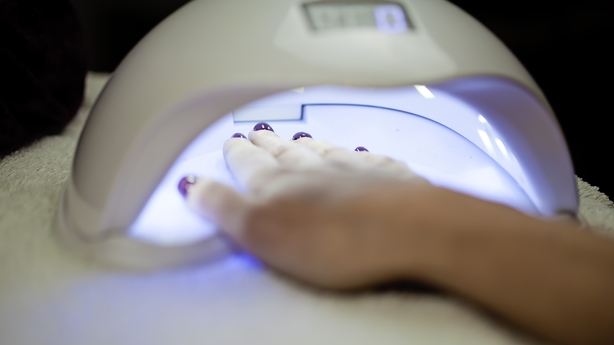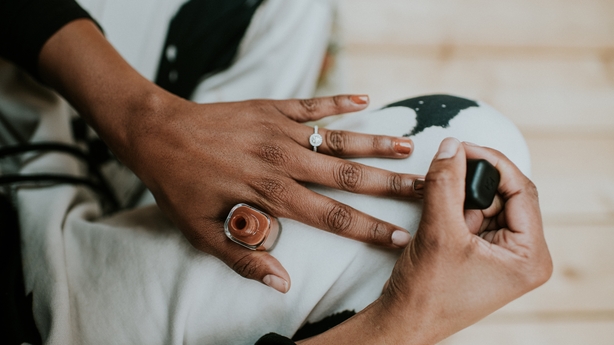Getting a fresh set of nails is one of life's little pleasures, and by no means an inexpensive one. With some gel manicures costing close to €100 depending on the style, getting your nails done is a luxurious self care routine for many of us.
However, there are new warnings about the risks posed by some of the components of gel polish which are causing reactions.
Some doctors in the UK have seen patients present with allergies when the polish isn't applied properly, which they say can lead to lifelong allergies to certain chemicals that are used in common medical products like dental fillings.
The UK government is now investigating these claims.

Dr Deirdre Buckley, Dermatologist with the British Association of Dermatologists, joined Today with Claire Byrne to discuss the hidden risks of the extremely popular beauty treatment.
Only 15 or 20 years ago, Buckley said, people with allergies to these chemicals were "few and far between" and mainly people working in windscreen repair, aircraft repair industries, printing and some dentists. The first report of someone working in the cosmetic industry developing such an allergy came in the mid 90s, she said.
However, experts were aware that you could develop allergies from nail treatments as far back as 50 years ago.
Cases of these allergies affecting those in the cosmetic industry have increased in the last 10 years, Buckley said.
Methacrylates, she explained, "when they're painted on your nails, they are sensitising, but then they are supposed to be hardened with an ultraviolet light that's known as curing", which makes them non-allergenic.
"What happens is the curing process with the light often doesn't take place properly", she added. This could be because the wrong wavelength of light is used, it may not be used for the right number of seconds or the light wattage might not be high enough – it should be at least 36w.

This is particularly relevant for people doing gel manicures at home, who might be using a different light for polishes they bought with a different kit.
Cross contamination is another risk, when spots of polish could land on towels or onto the skin itself.
Buckley says that an allergy won't present until after a customer has probably left the salon. "The first few times you have it done, you'll be fine. A lot of people I see have been getting it done for about a year, regularly, before they get sensitised, but that varies. It's never on the first occasion."
If a reaction happens, it's usually a couple of days after the manicure itself. "You may notice you're getting very itchy on your face, you get a rash on your face, your eyes might swell up, the eyelids. You might get a rash on your neck and the rash might take a week or two to go down.
"It might peel a bit on recovery, and then your skin will go back to normal and you'll be fine for however many days or weeks it is until you back for your next nail treatment ... and then, of course, it'll come back within a day or two."
She added that the reaction will "probably get worse each time", and that it can also present as itchy, red splits on the fingertips or little blisters. The nails can also start to loosen and come off in more advanced cases.

Buckley noted that the reaction can happen to any polish that is harden with UV light. One way to stop this is to stop getting these nail treatments, which Buckley says will let your nails heal after about a year.
"But the issue can be that later, if you go to the dentist and they say you need bonding done in your teeth, which is a coating on the outside to make it look better, repair chips", she said. This bonding can contain the same chemicals as the gel polish. This material is also used in white fillings.
This can get in the way of getting possibly necessary treatments done in many settings, she said.
Buckley stresses that most people who get gel treatments will never become sensitised to the chemicals, "but you don't know if you're the person who will become sensitised". "We also don't know what proportion of people using them are becoming sensitised."
She said that switching to classic nail polish is one option, and while people can be allergic to it, it's because of completely different chemicals.
"Consider not having it done at all and go back to the old type of nail polish. And if you are going to continue to go, go to a professional nail bar, make sure the people are accredited and trained if you possibly can and ask them not to trim your cuticles, push back on the nails, cause any kind of damage to the skin around your nails."
She also cautions against home nail kits, saying: "Although there is some kind of instructions in there, let's face it, not many of us at home isn't trained to put these on."
If you have concerns about an allergic reaction to your gel manicure, contact your GP.
To listen to the full interview, click above.

